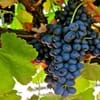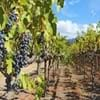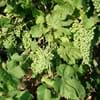Life Span
Perennial
Perennial
Origin
Not Available
Africa, South-Eastern Asia
Types
PRIMOCANE RED RASPBERRIES ,FLORICANE RED RASPBERRIES
Not Available
Habitat
Forests, Mountains, Tree canopies
Subtropical forests, Tropical regions
USDA Hardiness Zone
4-8
5-9
Sunset Zone
A1, A2, A3, 1a, 1b, 2a, 2b, 3a, 3b, 4, 5, 6, 7, 8, 9, 10, 11, 12, 13, 14, 15, 16, 17, 18, 19, 20, 21, 22, 23, 24
1a, 1b, 2a, 2b, 3a, 3b, 7, 8, 9, 10, 11, 14, 18, 19, 20, 21
Habit
Upright/Erect
Clump-Forming
Flower Color
White
Pale Yellow, Yellow green
Flower Color Modifier
Bicolor
Bicolor
Fruit Color
Red
Green, Light Green
Leaf Color in Spring
Green
Green
Leaf Color in Summer
Green
Light Green
Leaf Color in Fall
Green
Green, Light Green
Leaf Color in Winter
Light Green
Brown, Light Yellow, Tan
Plant Season
Spring, Summer, Fall
Summer, Fall, Winter
Sunlight
Full Sun, Partial Sun
Full Sun
Type of Soil
Loam, Sand
Clay, Loam, Sand
The pH of Soil
Acidic, Neutral
Acidic, Neutral, Alkaline
Soil Drainage
Well drained
Average
Bloom Time
Spring, Summer
Summer, Late Summer, Early Fall
Tolerances
Drought
Pollution, Drought, Salt
Where to Plant?
Container, Ground, Pot
Ground
How to Plant?
Suckers
Seedlings, Stem Cutting
Plant Maintenance
Medium
Medium
Watering Requirements
Average Water Needs
Needs less watering
In Summer
Lots of watering
Lots of watering
In Spring
Moderate
Moderate
In Winter
Average Water
Average Water
Soil pH
Acidic, Neutral
Acidic, Neutral, Alkaline
Soil Type
Loam, Sand
Clay, Loam, Sand
Soil Drainage Capacity
Well drained
Average
Sun Exposure
Full Sun, Partial Sun
Full Sun
Pruning
Remove damaged leaves, Remove dead branches, Remove dead leaves
A hard prune may be necessary if the plant becomes woody, Cut upper 1/3 section when young to enhancegrowth, Remove damaged leaves, Remove dead branches, Remove dead leaves
Fertilizers
All-Purpose Liquid Fertilizer
10-10-10 diluted liquid fertilizer, All-Purpose Liquid Fertilizer, Compost
Pests and Diseases
Red blotch
Aphids, Downy mildew, Purple Blotch, Red blotch
Plant Tolerance
Drought
Drought, Salt and Soil Compaction, Shade areas
Flowers
Insignificant
Showy
Flower Petal Number
Single
Single
Foliage Texture
Medium
Fine
Foliage Sheen
Matte
Glossy
Attracts
Birds, Butterflies
Bees, Flies, pollinators
Allergy
Abdominal pain, breathing problems, Diarrhea, Eczema, Fainting, Itchiness, Nausea, Vomiting, wheezing
conjunctivitis, sneezing
Aesthetic Uses
bank hedging, Cottage Garden, Slopes hedging
Not Available
Beauty Benefits
Not Available
Making cosmetics, Not Available
Environmental Uses
Air purification
Air purification, Shadow Tree, Soil protection
Medicinal Uses
anti-inflammatory, Anti-oxidant, Cancer, Improve heart health, Liver Protection, Skin Whitening and Pigmentation Medicine, Weight loss
Cardiovascular problems, Detoxifies lever, Diabetes, Dysentry, Jaundice, Menstrual Disorders
Part of Plant Used
Fruits, Leaves, Root
Inner Bark, Leaf Stalks
Other Uses
Jam, Jelly, Used As Food, Used for its medicinal properties
Can be made into a herbal tea, Oil is used for aromatherapy, Used as a fodder tree in agricultural areas
Used As Indoor Plant
No
No
Used As Outdoor Plant
Yes
Yes
Garden Design
Edible, Fruit / Fruit Tree, Hedges
Dried Flower/Everlasting, Lawns and Turf, Mixed Border, Wildflower
Botanical Name
RUBUS 'Autumn Bliss'
Terminalia arjuna
Common Name
Red Raspberry
Arjuna
In Hindi
रूबस idaeus
अर्जुन वृक्ष
In German
Himbeere
Terminalia arjuna
In French
Rubus idaeus
Terminalia arjuna
In Spanish
Rubus idaeus
Migdałecznik arjuna
In Portuguese
Rubus idaeus
Migdałecznik arjuna
In Polish
Rubusidaeus
Migdałecznik arjuna
In Latin
Rubus idaeus
arjuna
Phylum
Magnoliophyta
Magnoliophyta
Class
Magnoliopsida
Not Available
Clade
Angiosperms, Eudicots, Rosids
Angiosperms, Eudicots, Rosids
Tribe
Rubeae
Not Available
Subfamily
Rosoideae
Not Available
Number of Species
Not Available
Properties of Red Raspberry and Arjuna Tree
Wondering what are the properties of Red Raspberry and Arjuna Tree? We provide you with everything About Red Raspberry and Arjuna Tree. Red Raspberry has thorns and Arjuna Tree doesn't have thorns. Also Red Raspberry does not have fragrant flowers. Red Raspberry has allergic reactions like Abdominal pain, breathing problems, Diarrhea, Eczema, Fainting, Itchiness, Nausea, Vomiting and wheezing and Arjuna Tree has allergic reactions like Abdominal pain, breathing problems, Diarrhea, Eczema, Fainting, Itchiness, Nausea, Vomiting and wheezing. Compare all the properties and characteristics of these two plants. Find out which of these plant can be used as indoor plant. If you are interested to decorate your house and garden, find out aesthetic uses, compare them and select the plant which will beautify your surrounding. Along with beautification, try comparing medicinal and edible uses of Red Raspberry and Arjuna Tree and you can choose the plant having best and most benefits.
Season and Care of Red Raspberry and Arjuna Tree
Season and care of Red Raspberry and Arjuna Tree is important to know. While considering everything about Red Raspberry and Arjuna Tree Care, growing season is an essential factor. Red Raspberry season is Spring, Summer and Fall and Arjuna Tree season is Spring, Summer and Fall. The type of soil for Red Raspberry is Loam, Sand and for Arjuna Tree is Clay, Loam, Sand while the PH of soil for Red Raspberry is Acidic, Neutral and for Arjuna Tree is Acidic, Neutral, Alkaline.
Red Raspberry and Arjuna Tree Physical Information
Red Raspberry and Arjuna Tree physical information is very important for comparison. Red Raspberry height is 120.00 cm and width 120.00 cm whereas Arjuna Tree height is 300.00 cm and width 45.70 cm. The color specification of Red Raspberry and Arjuna Tree are as follows:
Red Raspberry flower color: White
Red Raspberry leaf color: Green
Arjuna Tree flower color: Pale Yellow and Yellow green
- Arjuna Tree leaf color: Green
Care of Red Raspberry and Arjuna Tree
Care of Red Raspberry and Arjuna Tree include pruning, fertilizers, watering etc. Red Raspberry pruning is done Remove damaged leaves, Remove dead branches and Remove dead leaves and Arjuna Tree pruning is done A hard prune may be necessary if the plant becomes woody, Cut upper 1/3 section when young to enhancegrowth, Remove damaged leaves, Remove dead branches and Remove dead leaves. In summer Red Raspberry needs Lots of watering and in winter, it needs Average Water. Whereas, in summer Arjuna Tree needs Lots of watering and in winter, it needs Average Water.





